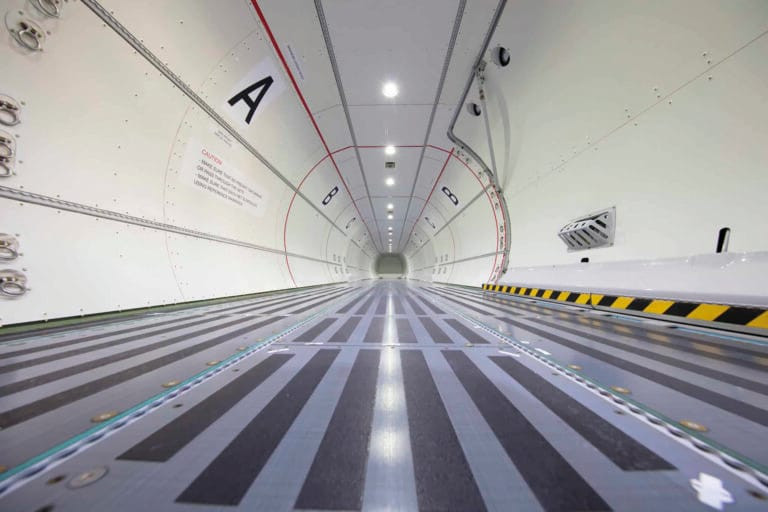- Regional freighters are vital for the “last mile,” delivering essential goods and e-commerce parcels to remote and underserved areas.
- Turboprops offer efficiency, lower fuel use, reduced noise, and the ability to operate from smaller airports, making them ideal for regional cargo.
- Flexible aircraft options and model commonality enable both small operators and global carriers to scale and manage operations cost-effectively.
Regional freighters are the hidden link between large global shipments and the so-called “last mile” that puts goods in the hands of consumers. They are often the only lifeline for remote or isolated communities, carrying not just e-commerce packages but also essential supplies such as food, medicine, and even fuel. By connecting regional airports and bypassing congested hubs, these aircraft play a critical role in making logistics both faster and more resilient.
As Gilles Collaveri, Business Development Director at ATR, explains: “If you look at Canada, for example, there are places where there are no roads, no trucks, no railways. The freighter is bringing everything—sometimes even fuel stored in bladders. These aircraft are a lifeline.”
The explosion of e-commerce has added new urgency to the role of regional cargo. Platforms promising same-day or next-day delivery rely on a seamless chain of connections, and regional freighters are increasingly the workhorses that close the gap between global supply routes and consumer markets.
“e-commerce is definitely a dominant force in the market,” says Collaveri. “What you order online is often moved the last step by regional aviation. And it’s not only about parcels—it can be fabrics, industrial parts, or even everyday necessities. Basically, anything and everywhere.
“In countries like Thailand, Indonesia and the Philippines, e-commerce is booming. The demand for regional freighters in those regions is growing rapidly because people expect the same delivery standards you see in Europe or North America.”
But the story goes beyond online shopping. For remote regions, particularly in Canada or parts of Africa, freighters provide a literal lifeline. “In Gabon, an ATR was even used to transport gorillas to a national park,” Collaveri recalls. “In other places, they’ve carried fuel, food and medicines. The missions are as diverse as the people who depend on them.
“I really believe regional freighters will be indispensable. With rising fuel costs, efficient aircraft are critical. With growing e-commerce, the demand is only increasing. And for remote communities, they are not just an option—they are essential.”
The economics
While jets dominate headlines, regional turboprops have carved out a niche by offering efficiency, flexibility and lower environmental impact. ATR’s freighters, for instance, are specifically designed for short-haul operations, able to land at smaller airports while consuming significantly less fuel.
“From an environmental standpoint, turboprops use about 45 percent less fuel than equivalent jets,” Collaveri explains. “That means lower emissions and lower costs.”
Noise is another growing factor. Many airports are under pressure to restrict jet operations at night due to community complaints. “ATR is very silent compared with jets,” he says. “More and more cities are requiring quieter operations, so being able to fly later into the night is a huge advantage for logistics companies.”
Cost efficiency, environmental performance and noise reduction are all converging to make regional turboprops increasingly attractive. “It’s unbeatable economics,” says Collaveri. “If you look at the current global regional freighter fleet, around 90 percent are turboprops—and most of them are ATR.”
Flexibility for all operators
Regional cargo aviation is not a one-size-fits-all industry. Large players such as FedEx have invested in purpose-built freighters that can serve for decades, while smaller operators often rely on converted passenger aircraft for quicker, more affordable entry into the market.
“A converted freighter is cheap and available quickly,” says Collaveri. “It may last 10 to 20 years. A factory-built freighter is a long-term investment—30 years, even up to 50. FedEx, for example, started with converted ATRs and then moved to brand new factory-built ones. It shows how operators can grow step by step.”
This flexibility makes regional aircraft attractive to both established giants and smaller start-ups targeting underserved markets. “We have very different customers—from small operators in Indonesia to global giants like FedEx,” Collaveri says. “And we support them all. Whether someone buys one used converted aircraft or a fleet of new ones, they are equally important.”
Commonality between aircraft types further reduces complexity. “The structure of an ATR 72-200 and a 72-600 is almost the same,” he explains. “Spare parts, training, mechanics—it’s all very close. That makes life easier for airlines expanding their cargo operations.”





